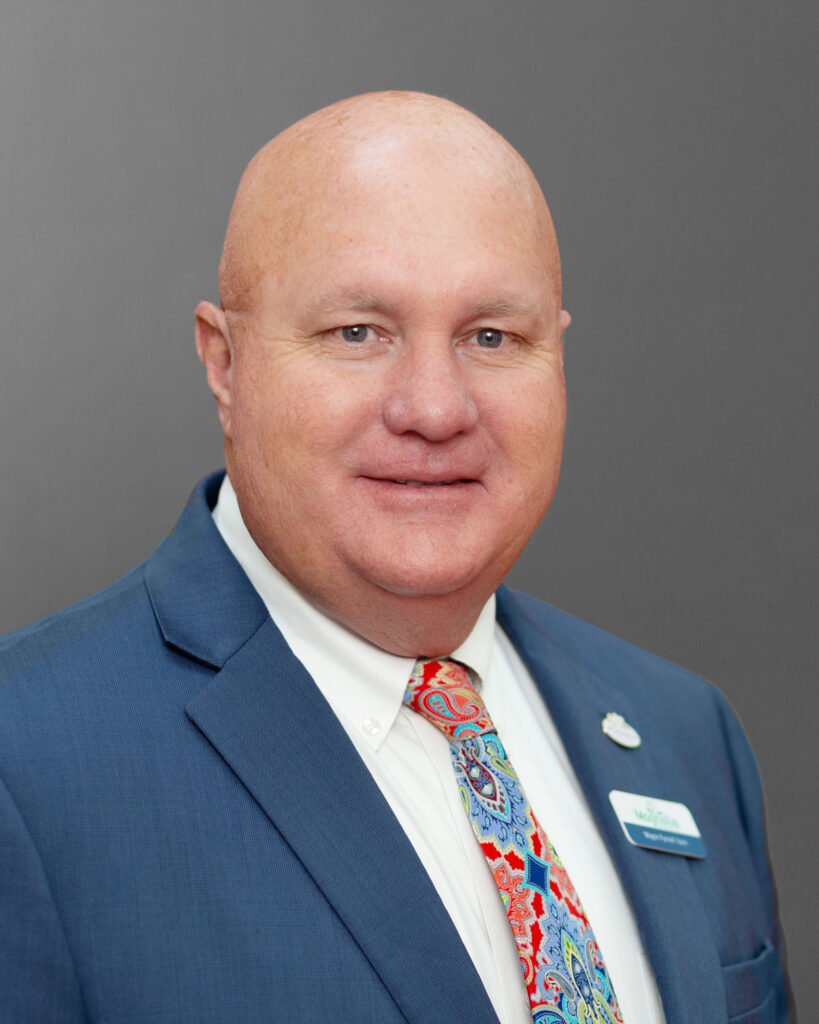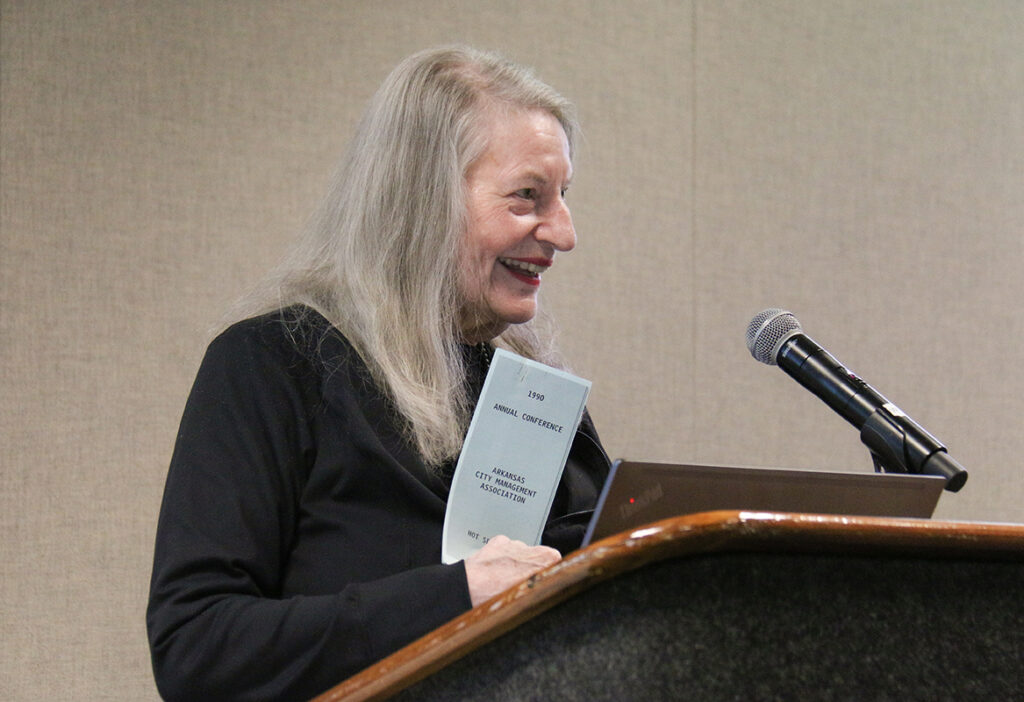This article originally appeared in the 2025 edition of Block, Street & Building, an annual publication celebrating the best in new urbanism in Arkansas. Block, Street & Building is produced by the Arkansas Times in partnership with the Arkansas Municipal League. Click here to read Von Tungeln’s final “Planning to Succeed” column for City & Town.
Planners are seldom heralded. Though their work is felt by all in a community, attribution of that work is often hidden behind layers of steering committees, planning commissioners and elected officials whose opinions and approvals shape and bring a planner’s work to life. But if planners had a pantheon of pillars within the profession, Jim von Tungeln would be first among those listed.
With a career spanning over 50 years and countless night meetings on the road, he’s accumulated a long list of accomplishments, an impeccable reputation and a full catalog of great stories stolen and retold by others. Von Tungeln’s work has impacted communities in every corner of the state, played a deciding factor in a land-use case before the Arkansas Supreme Court, resulted in an immeasurable amount of sage advice to many vexed planners and mayors, and leaves a legacy of public service with organizations like the Arkansas Municipal League and Little Rock Planning Commission. He’s an equally fascinating person with a life story fit for the printed word and screen.
A native son of Pine Bluff, he grew up on the outskirts of the city’s southside where the von Tungelns lived and operated a country grocery store. Like so many of his age, the novelty of television spurred his imagination and opened a new world to him. He recalls watching I Love Lucy and being mesmerized by the idea of city life where a young man like Little Ricky could live in a fancy apartment building and walk down the street to get ice cream. This early fascination with the city laid the foundation for his future career in urban planning.
Like many who grew up with parents who endured the Great Depression, his family saw education as a worthy pursuit. This nudge brought him to the University of Arkansas, where he majored in architecture. This decision was a compromise between his own interests and his father’s wishes for him to become an engineer. He took every course he could related to urban planning and fondly remembers a seminar by Ian McHarg that laid out the theoretical foundation for Design With Nature, one of the planning field’s most highly celebrated texts.
Following graduation in 1966 and seeking adventure and opportunity, he landed in San Francisco. Opportunity came in the form of a job as a draftsman with Babcock and Wilcox. Adventure came in immersing himself in a city of remarkable beauty and vibrancy, one 15-cent bus or trolley trip at a time. It was amplified by living near Haight- Ashbury while the hippie movement was fomenting a countercultural revolution. This adventure was short-lived due to his 1-A draft classification. By 1967, he’d joined the Navy just in time for the Tet Offensive and found himself stationed on mainland Vietnam in the Naval Security Force protecting naval bases. A tour of duty and a year and a half aboard the USS Hunley later, he was honorably discharged to return to San Francisco.
As von Tugeln says, his “sainted mother” begged him to stay a while in Pine Bluff before returning to San Francisco. Searching for jobs, he experienced the discrimination commonly felt by Vietnam veterans. Through a circuitous route of connections, he ended up interviewing in downtown Little Rock with the upstart Urban Planning and Development Corporation run by Tommy Hodges and Jim Vines. Flush with upcoming planning projects funded through the 701-planning program, a part of urban renewal, the company hired him on the spot. Always being the first to arrive and last to leave, von Tungeln was soon asked to tackle production for the firm, and his career took off. He became a junior partner within a few years. It was a significant time for his personal life as well.
A move to a new apartment and a chance encounter with a pretty young farmer’s daughter and a Lonoke school teacher left him smitten. His charm over his looks eventually won her over. Jim and Brenda later married, forging a lifelong love and litany of enumerable stories that von Tungeln lovingly enjoys telling.
The late 1970s into the 1980s were a turbulent time in the planning profession in Arkansas. The establishment of planning and development districts decimated private firms in the state. The Reagan administration ended the 701-planning program, and federal revenue sharing with local governments nearly finished them off and ended many cities’ efforts at planning due to financial distress. This period led to professional shifts for von Tungeln, handling grants and business development for a regional engineering company. For a time, he took up real estate appraising. Things changed with a pivotal change in state policy.
In 1981, U.S. Rep. John Paul Hammerschmidt and Don Zimmerman of the Arkansas Municipal League teamed up to get the local option sales tax enabling statutes passed. Broad adoption of the local option sales tax by cities took a while, with Forrest City being one of the first to put the issue before voters. By the late 1980s and early 1990s, use of the local option sales tax became common … and von Tungeln’s phone started ringing.
After old clients began reaching out, he decided to start his own planning firm. The decision proved fateful, and his phone hasn’t stopped ringing since. And while other work might have proved very lucrative, his desire to advance the public interest by applying his planning knowledge left him diving back into the practice he loved.
In the late 1990s, he was brought on staff with the Arkansas Municipal League to help deal with the influx of planning issues that began perplexing mayors and city attorneys. Over his career, he has a lengthy list of clients from places like Little Rock all the way to small towns like Keo. Von Tungeln estimates that he’s directed projects in over 75 Arkansas cities and provided assistance to the majority of Arkansas’ nearly 500 cities and towns.
During his career, certain work has stood out. Von Tungeln served as an expert witness in the Utley v. Dover case, a matter over an annexation conducted by the city of Dover, heard by the Arkansas Supreme Court. His testimony proved pivotal in the favorable decision for Dover, with the court stating, “… the testimony of Mr. von Tungeln on this criterion clearly supports the trial court’s decision; therefore, we cannot say that the trial court’s finding on this point was clearly erroneous.”
Other projects were comprehensive plans for the cities of Paragould, Batesville and Arkadelphia. A mark of a good plan and an even better planning effort is implementation. Each of these plans saw significant portions of the plan directly implemented. Von Tungeln notes these efforts stand in contrast to some of the planning he saw earlier in his career during the 701-planning program. In those days, some efforts by cities were treated as perfunctory work to unlock access to more grant funding.
Those efforts over 50-plus years have led him to other lessons learned as well. Von Tungeln says, “Planning is public administration,” a point he says many who dabble in planning fail to grasp. Von Tungeln sees the error of many who view urban design as a sole solution and who casually ignore issues of politics, property rights and decades of precedence established through case law and planning statutes. “Planning is about moving vision into policy,” he states. He views the stunning graphics produced by many urban designers as inspiring, but says, “Pretty pictures must have substance,” a view that conveys the necessity that design can’t just inspire, it needs real policy to implement it.
When projecting a future course for planning in our state, von Tungeln identifies education and selling of the value of planning. He sees a critical need for more in the profession and allied professions to operate from a strong understanding of the legal and practical foundations of planning to address real and critical issues like aligning utility capacity with land-use patterns, as well as addressing the fundamental needs of communities like safety and affordable housing. Succinctly, he says, “There is more to planning than roundabouts and trails.”
Moreover, von Tungeln sees a need for the profession to demonstrate its value. We live in a time where trust in government and respect for professional opinions are quickly eroding. Planners must demonstrate that their abilities to see possibilities and understand the connectedness of systems matter. He believes planners must show why planning helps create better places.
Planners need look no further than Jim von Tungeln’s legacy to demonstrate their value. His work has bettered cities and the lives of so many across our state. His advice and knowledge have shaped both the law and countless decisions toward fairness and the interest of the common good. It’s a legacy that serves as a measuring stick and high bar for all who follow him.










